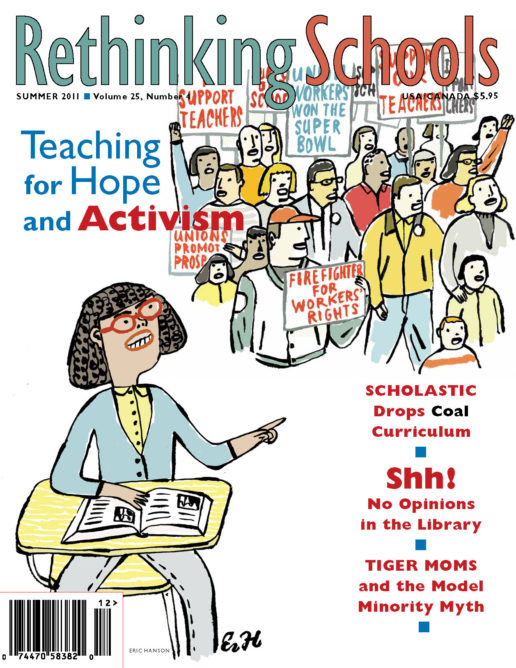Preview of Article:
Tiger Moms and the Model Minority Myth
Illustrator: Jordan Isip
Some months ago, Yale law professor Amy Chua wrote an op-ed for the Wall Street Journal that set off a media and cultural firestorm. Titled “Why Chinese Mothers Are Superior,” the piece’s outlandish assertions about Asian immigrant parenting hit the requisite rounds on the 24-hour news cycle. Though the media chatter was nonstop for weeks, what was not adequately addressed is Chua’s calculated exploitation of a pernicious stereotype that has had deep impact on youth—particularly youth of color—in our schools: the model minority stereotype of the superhuman Asian student.
The “model minority” stereotype promotes the idea that Asian youth will succeed academically under any circumstance because they have families at home that push them toward academic excellence, because Asians understand and support the U.S. system of education, because Asians have access to more resources than others, and because they are resilient and can withstand any manner of abuse. Asian students supposedly have parents who are a relentless and constant presence in their children’s lives, who demand academic excellence and support nonstop tutoring and music—even on vacations.

